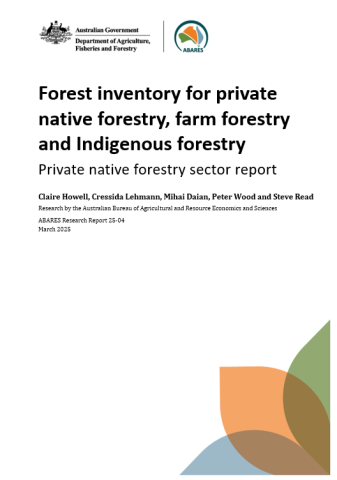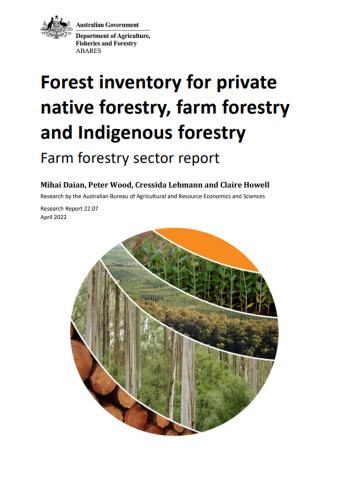The 'Forest inventory for private native forestry, farm forestry and Indigenous forestry' project was developed under the 2018 National Forest Industries Plan [3.1 MB] Growing a Better Australia – A billion trees for jobs and growth. A key goal of the project is to improve the national description of Australia’s forests in areas outside the publicly managed estate.
The project assessed existing available information on three sectors: privately managed native forests, planted farm forestry, and native forests managed by Indigenous peoples.
The Private native forestry sector report and Farm forestry sector report are two of three reports developed as part of this project, with the report for Indigenous forestry forthcoming.
Publication date: 28 March 2025
The Private native forestry sector report [6 MB] delivers an improved understanding of Australia’s private native forest resource. This was realised through the identification of areas that private land-managers have identified for commercial forestry, state agencies have deemed potentially suitable for commercial forestry and areas assessed as potential from national datasets.
A total of 17.5 million hectares of native forest was identified as either being managed for, or having the potential to be managed for, private native forestry through this assessment process:
- 1.4 million hectares (8%) was identified as ‘Land-manager assessed’, representing areas having approval to harvest or management intent to harvest
- 6.6 million hectares (38%) was identified as ‘Agency-assessed potential’, representing areas assessed by state government agencies
- 9.5 million hectares (54%) were identified as ‘Nationally assessed potential’, representing areas assessed by ABARES from national datasets.
Wood volume estimates from these areas cannot be determined due to the unknown quality and productivity of the forests.
The study also identified that improved access to information, including markets, prices and forest management practices could increase landholder engagement in private native forestry.
Download the report
Publication date: 06 April 2022
The Farm forestry sector report [3.4 MB] delivers an improved understanding of Australia’s planted farm forestry resource. This was realised through the identification, compilation and validation of existing available inventory data as collected by various programs over time. A complete inventory of Australia’s current farm forestry estate was not undertaken in this project.
A total of 73,400 hectares of farm forestry in Australia was identified in 40 historical datasets, representing about 3,000 landholders. Farm forestry occurs in all Australian states, and in 10 of the 11 Regional Forestry Hubs (no farm forestry was identified in the Northern Territory), with most of the area identified (62%) being in Tasmania.
Of this identified area, 53,100 hectares have previously been identified and reported as commercial plantation in Australia’s National Plantation Inventory.
Download the report
Forest inventory for private native forestry, farm forestry and Indigenous forestry: Farm forestry sector report [3.4 MB]


